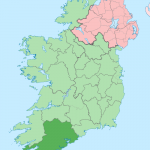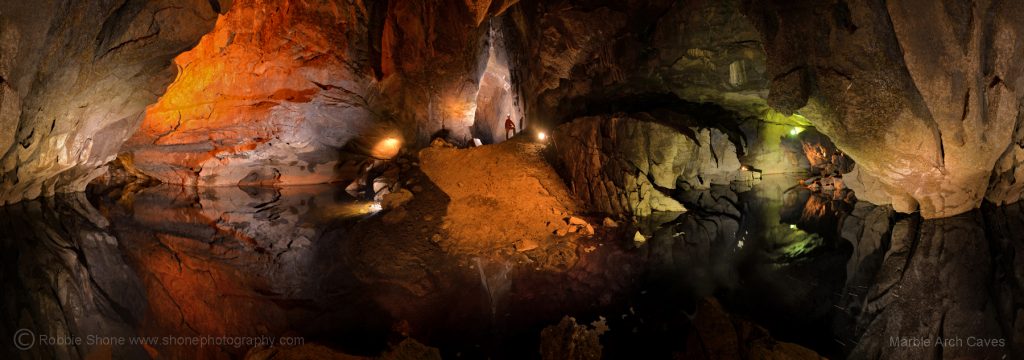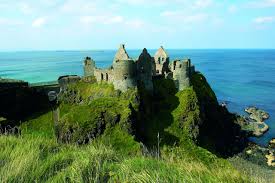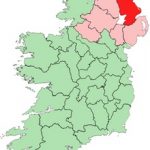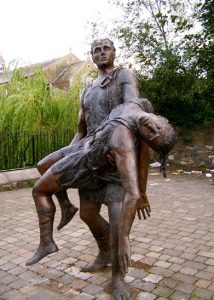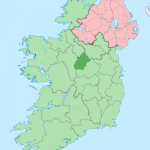by Elizabeth Burgher

Elizabeth Burgher in Leenaun
In June we visited two Irish towns where two important Irish films were shot: The Field and The Quiet Man, shot in Leenaun and Cong respectively. It’s a well-known fact that the layout of sets in films is often not the same as it is in real life; for example, a viewer could see a man walk down a street and turn a corner, presumably to the street right next to it, but in real life those two streets could be a hundred feet away from each other. While this was also true for comparisons between the films and the locations we visited, what amazed me about visiting these two sites was how even if the physical layout was not the same, the overall feel of the place was.
Leenaun is a small, one-horse town (a village really), nestled on the Killarny Fjord in the west of Ireland, with rugged mountains and peaks looking down on it. This ruggedness is in complete keeping of the hardy, masculine air of The Field.
And in complete contrast, Cong was even more charming and idyllic in real life than the town of Inishfree was in The Quiet Man. Between the quaint little shops (selling a great deal of film-related memorabilia), the tasty cafes, the surrounding loveliness of the landscape, and the majesty that is the nearby Ashford Castle, the film’s depiction of heaven seemed entirely real. We rented bikes from the stables near to Ashford Castle and were whisking off through shady forests and sunny paths, and as I passed a tour guide (who was leading a The Quiet Man film location walking tour through Cong), he remarked, “And no, that wasn’t Maureen O’Hara” while all the tourists, including myself, laughed. As I sped away I thought, he could be right, because in that moment I could so easily have been her, a young woman bike riding through a heavenly little Irish town.
Through these visits, the films really came alive for me, because it felt like I was really living inside them. And I guess in a way, I was. It turns out that the phrase “life imitates art” has some true meaning.

 Dublin also known as the “city of living culture” is one of the main cultural centers of Ireland with a vibrant Art and literary lifestyle. Famous authors such as James Joyce, George Bernard Shaw, Oscar Wilde and Jonathan Swift all produced works here. It had tons of museums, theatres, historic houses and concert halls. The Irish national library is found here as well. Dublin is a cosmopolitan city than that of Galway. Its population is very young with an estimate of 50% being below 20 years old and a vibrant club and nightlife around St. Stephen’s Green and Grafton Street for pub crawls. It has a vibrant music scene with live musicians on the street and tons of concert halls producing artists such as U2, Kodaline and The script along with a underground music scene huge in the 1980’s. It is typically an immigrant city with international makeup and many cultures mixed together along with two colleges such as the University of Dublin and Trinity College Dublin.
Dublin also known as the “city of living culture” is one of the main cultural centers of Ireland with a vibrant Art and literary lifestyle. Famous authors such as James Joyce, George Bernard Shaw, Oscar Wilde and Jonathan Swift all produced works here. It had tons of museums, theatres, historic houses and concert halls. The Irish national library is found here as well. Dublin is a cosmopolitan city than that of Galway. Its population is very young with an estimate of 50% being below 20 years old and a vibrant club and nightlife around St. Stephen’s Green and Grafton Street for pub crawls. It has a vibrant music scene with live musicians on the street and tons of concert halls producing artists such as U2, Kodaline and The script along with a underground music scene huge in the 1980’s. It is typically an immigrant city with international makeup and many cultures mixed together along with two colleges such as the University of Dublin and Trinity College Dublin.

